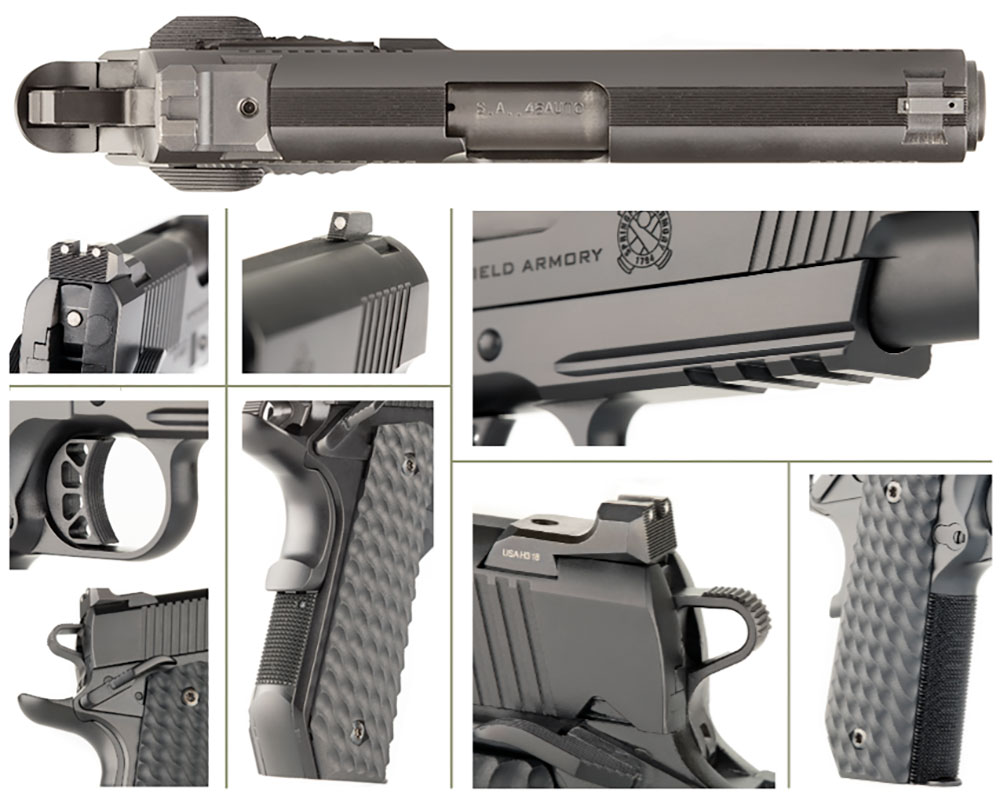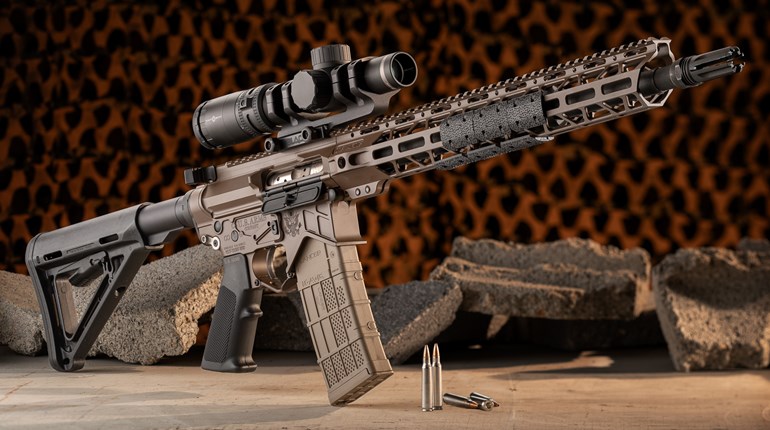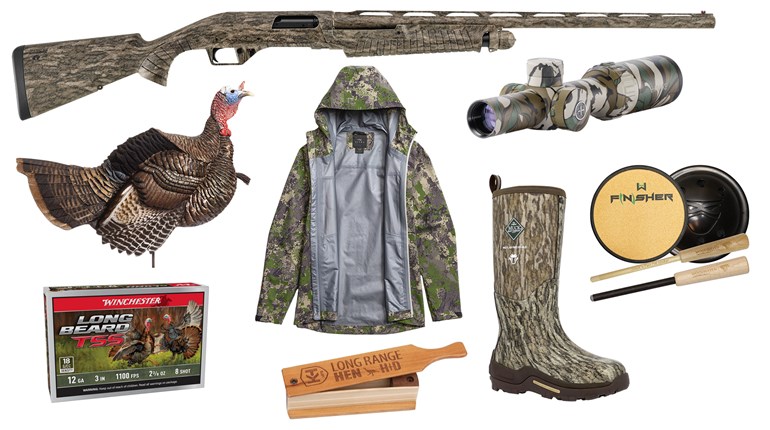
If you’d shown a younger me the Springfield Armory 1911 TRP 4.25-inch CC pistol, I’d have thought it was just about the perfect carry gun. For years, I was a huge fan of the 1911 for concealed carry—I had a Colt 1991A1 Compact that was my go-to for a long time. Now, don’t get me wrong; I’m still a huge fan of John Moses Browning’s most famous creation (at last count, I have a good half-dozen, including a World War I-era 1911, a Gold Cup National Match and the aforementioned 1991A1). As I’ve gotten older, I’ve become an adherent to red-dot sights on carry handguns and, as such, have gravitated to polymer-frame handguns with dedicated optics cuts.
But, back in the day, I’d have gushed about the 1911 TRP 4.25-inch CC’s extensive feature list: railed dustcover for lights and other accessories, aggressive checkering to anchor the pistol in the hand, the contour-carry cut at the back of the grip to enhance concealment, lighter-weight aluminum frame; this pistol has pretty much every feature you’d want in a carry 1911—right down to the Commander-length slide and barrel. Tack on ambidextrous thumb safeties, an extended beavertail, VZ Grips Hydra stocks, a match-grade barrel, night sights … well, the list is long and impressive. Then again, Springfield’s TRP line has long been known for including everything you want in a fighting 1911.
What the TRP line has not been known for, until very recently, are models with concessions made for concealed carry. When the TRP line rolled out, there were three models available, all Government-size with 5-inch barrels. One had a railed, full-length dustcover; the other two were standard Government-Model-1911-size pistols. All three were all-steel construction, meaning the lightest weighed close to 40 ounces. Now, granted, plenty of concealed carriers do just fine with that pistol; it’s certainly been a staple for a long time.
Having a Commander-length model makes inside-the-waistband carry a little easier, though, and the Carry Contour I have on my test pistol further lessens the chance of printing. At a traditional 3- or 4-o’clock position on the waistband, the back of the grip may protrude slightly through a cover garment; clipping that sharp corner significantly reduces this possibility. Oh, and the frame material of the new 1911 TRP 4.25-inch CC shaves nearly three-quarters of a pound from the total weight of the pistol when the shorter slide and barrel as well as the different materials used in its construction are taken into consideration.

When it comes to shooting the TRP series, there are two notable points: First, the match-grade barrel and excellent trigger yield superlative results. We’ve long noted the big advantage of the single-action trigger of the 1911 in getting accurate hits on target, and Springfield has made sure the TRP series continues this tradition. Second, that 20-lpi checkering on the frontstrap is sharp—like, really sharp. If you’re going to take this pistol to a week-long training class, get a good pair of shooting gloves. Your hands will thank you. It’s wonderful for anchoring the TRP in your hand during rapid strings of fire, and for short range sessions it’s not unduly painful. During longer range days, however, it will abrade your hands pretty seriously. It’s not a deal breaker by any stretch of the imagination, just something about which to be aware.
On top of the 1911 TRP 4.25-inch CC is a three-dot tritium setup designed for performance in low-light scenarios. Both the front and rear sight use standard 1911 dovetail mounts, so if you’ve got a personal favorite from the aftermarket, swapping sights isn’t an undue burden. However, the sights on the TRP are pretty good in their own right; the rear is Springfield’s Tactical Rack arrangement where the slide of the pistol can be assisted by way of the ledge on the rear sight. Now, I don’t know that I’ve ever needed to charge my pistol using my belt, boot heel or other hard surface, but the ability to do so is there. The top of the slide is serrated to reduce glare, making sight acquisition even easier. There are plenty of useful components in this pistol, indeed.
To start the testing process, I ran the 1911 TRP 4.25-inch CC through our standard protocol for velocity and accuracy testing, in addition to a few standard drills designed to help get a feel for the pistol in defensive situations. Whether it was a 5X5X5 drill or a failure drill, the TRP ran whatever ammunition we fed it without incident, with the accuracy you’d expect from a Springfield Armory 1911. The TRP series is a “next-level” 1911 in Springfield’s line, and while even the entry-level pistols run great, the TRP really is superlative. If you’re looking for a 1911 upon which you can rely to defend yourself and your loved ones, this model is well-suited.
On the range, 320 rounds were used in testing: 100 rounds of standard CCI Blazer 230-grain FMJ that are not included in the accompanying table, but indicate that the TRP will work just fine with inexpensive practice ammo. Federal’s Syntech 220-grain TSJ ammo saw 100 rounds tested to see if the polymer coating would interfere with function (they did not), and 60 rounds of both Hornady 185-grain FTX and 230-grain Winchester Train & Defend JHP were tested to see how the TRP handled carry ammunition. Only one failure was experienced in testing: the last round of the load from Winchester failed to chamber; cycling the pistol by hand remedied this, and it fired and extracted with zero problems after that. Also tested was function with other 1911 mags—Wilson Combat and Chip McCormick magazines functioned perfectly (which is exactly what I expected).
Yes, there are cheaper 1911 pistols available, some of which are even in Springfield Armory’s lineup. For the price of the TRP, though, you’re getting everything you want in a fighting 1911, and nothing you don’t want. From the grips to the sights, the trigger, the barrel—everything is top-notch and just plain works. About the only thing I’d lobby for would be an optics cut, but that’s just me. This might not be the absolute zenith in the fighting 1911, but it’s awfully close.





































